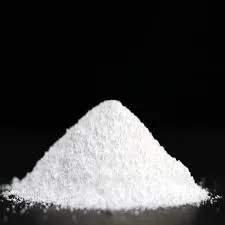Anti-Fog Additives for Plastics Enhancing Clarity and Performance
In various industries, the clarity of plastic surfaces plays a pivotal role in ensuring product quality and customer satisfaction. Fogging, or the formation of tiny water droplets on plastic surfaces, can severely impair visibility and reduce the aesthetic appeal of products, particularly in applications such as packaging, automotive, and safety equipment. To combat this phenomenon, anti-fog additives have emerged as a crucial solution, enhancing the performance and functionality of plastics.
Understanding Fogging
Fogging occurs when water vapor condenses on a cooler surface in the form of tiny droplets. This is particularly problematic in items like food packaging, where clear visibility is needed to allow consumers to assess product quality. Additionally, in automotive applications, such as headlights, fogging can hinder visibility and pose safety risks. The formation of fog is influenced by temperature fluctuations and humidity, making it a prevalent issue in various environments.
The Role of Anti-Fog Additives
Anti-fog additives are substances integrated into plastic formulations to minimize or prevent fog formation. These additives work by reducing the surface tension of water droplets, allowing them to spread out into a thin, uniform layer of moisture, rather than forming opaque beads. By promoting a more even distribution of moisture, these additives maintain clarity and transparency, ensuring that the visual qualities of the plastic remain intact.
Types of Anti-Fog Additives
There are several types of anti-fog additives, each with unique properties and mechanisms of action
1. Surfactants These compounds lower the surface tension of water. When incorporated into plastic, they facilitate the spreading of water droplets, preventing the accumulation of fog. Common surfactants include glycerol esters and sorbitan esters.
2. Hydrophilic Polymers Polymers with hydrophilic properties can absorb moisture, reducing the likelihood of fog formation. Examples include polyvinyl alcohol (PVA) and polyethylene glycol (PEG).
anti fog additives for plastics

3. Nano-Additives Nanoparticles can modify the surface properties of plastics, promoting better moisture management. By enhancing the roughness or porosity of the surface, these additives can further reduce fog formation.
4. Coatings In some cases, instead of mixing additives into the plastic, a special coating can be applied to the surface to impart anti-fog properties. These coatings can offer additional benefits, such as UV resistance and scratch protection.
Applications and Benefits
Anti-fog additives find applications across numerous industries. In the food packaging sector, they ensure that consumers can clearly see the products, thereby enhancing freshness perception and consumer confidence. In automotive and safety gears, these additives contribute to clearer visibility, which is essential for safe operation. Furthermore, in industrial settings, anti-fog solutions help maintain visibility in environments where humidity and temperature fluctuations are common.
The benefits of incorporating anti-fog additives extend beyond just visibility. They also enhance the overall durability and lifespan of plastic products by preventing moisture-related degradation. For manufacturers, the ability to offer clearer, more effective products can lead to increased customer satisfaction and loyalty.
Environmental Considerations
As sustainability becomes an increasingly important criterion for consumers and manufacturers alike, it's essential to consider the environmental impact of anti-fog additives. Several companies are developing bio-based and biodegradable alternatives to conventional additives, aiming to reduce the environmental footprint of plastic products. The advancement in green chemistry is paving the way for safer and more sustainable options without compromising performance.
Conclusion
Anti-fog additives are a vital component in the quest for clearer, more durable plastic products across various industries. By effectively managing moisture and preventing fog formation, these additives enhance visibility and functionality, ensuring that plastic meets the rigorous demands of modern applications. As research and technology advance, we can expect even more innovative solutions that prioritize environmental sustainability while maintaining the essential qualities that consumers expect. Embracing these advancements will undoubtedly shape the future of plastic manufacturing and application, leading to improved products that align with both performance and ecological responsibility.

